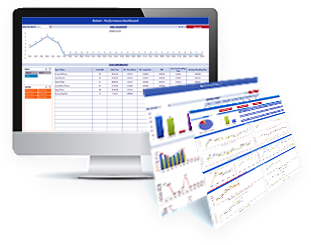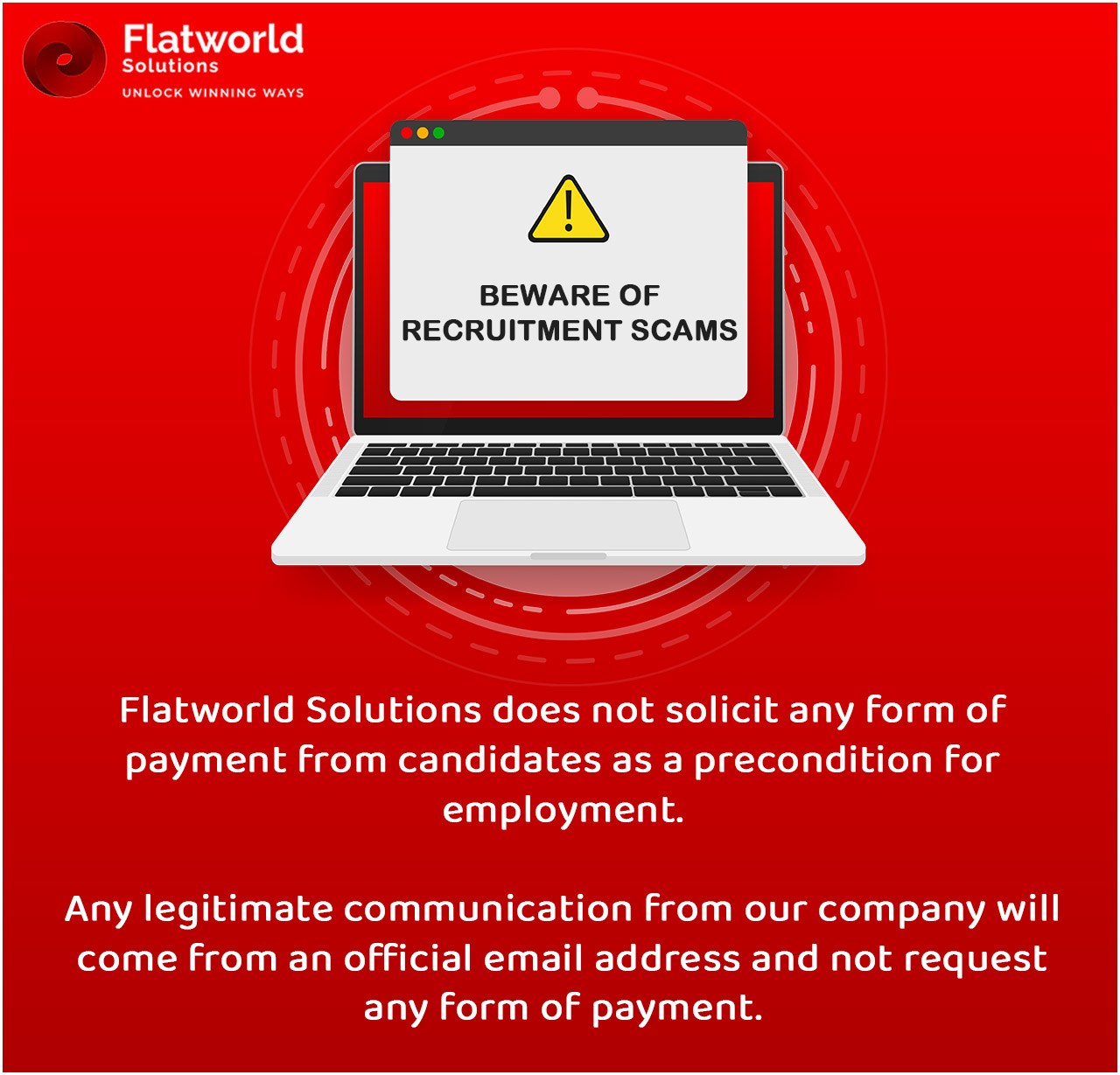If you are new to the world of customer service, you might want to learn more about the top call center terminologies and call center abbreviations that are widely used in the industry. During the day-to-day operations, the service providers speak a lot of jargon that might not be easy-to-understand for the new clients. But these terms have become a part of life and are used like the English language in the call center world. Our call center glossary will shed light on some of the important call center terms that will get you up to speed
Popular Call Center Terminologies
To make things easy for people, we have listed all the popular call center terminologies, acronyms, and abbreviations here -
- Agent - A person employed by the call center to make outbound calls or respond to calls and answer customer queries. Agents are also known as Customer Service Representatives, representatives, or customer advisors.
- Agent Utilization - Agent utilization is the percentage of an agent's in-call time over the total logged time. This number shows how busy the agent is.
- Average Handling Time (AHT) - It is the average time taken by the agent after he or she starts a customer's call, answers the questions, takes in the vital details, puts the customer on hold, ends the call, and does the after call work. AHT is considered as an important performance indicator.
- Average Talk Time - This is a measure of the time an agent takes while actually talking to the customer. This excludes call hold time and the after-call work time.
- Automatic Call Distributor (ACD) - ACD is a phone system that handles all the incoming calls, identifies the numbers, matches them with the existing database, and routes/queues the call to the right department or agent.
- Automatic Speech Recognition (ASR) - To reduce the intervention of the agents, automatic speech recognition technology is used which verifies the identity of the caller. It is also used to automate portions of the customer interaction process.
- Abandonment Rate - Also known as Call Abandonment Rate; it is the percentage of callers who hang-up before being answered by a customer service representative.
- Adherence - Call center agents are trained to follow certain processes, script, policies, language, and so on. Adherence is a measure of how much an agent complies with those set rules.
Call Center Software we use









- Blended Universal Queue System (BUQS) - It is a technology that smoothly integrates the multiple channels through which the customers contact the company. It blends email, chat, social media, and telephone, into a single and manageable queue.
- Call Blending - If an agent performs the tasks of making outbound calls and taking inbound calls, then there's a need to manage the time efficiently so that the agent can spend the right amount of time on both the tasks. This is accomplished by call blending which organizes the flow of inbound/outbound calls. Call blending could be automated or done manually.
- Call Data - Whenever a customer calls, an instance is created in the telecom equipment. It records the vital data about that call. This data is known as call data.
- Call Recording - Call recording has become a key part of call centers where the callers are informed that their call would be recorded for quality, training, or compliance purposes. The recordings are analyzed to make the future customer interactions better, increase efficiency, and ensure adherence.
- Call Routing - It is important that the caller gets connected to the agent who can solve the issue as fast as possible. Call routing ensures that the calls are transferred to the correct agents based on their skills and expertise.
- Call Guide - A call guide is a set of processes and the relevant questions at each stage that an agent must follow and ask while handling any call.
- Customer Experience (CX) - Customer experience is a measure of how the customer liked interacting with the company's call center. It involves studying the waiting time, average call handling time, hold time, agent skills, how fast the queries were resolved, actions taken, and much more. Customers might be asked to give feedback on the call as well.
- Customer Relationship Management (CRM) - These are enterprise applications that are used for integrating, collaborating, and managing all the customer data at one place.
- Calling Line Identity (CLI) - CLI, or Automatic Number Identification, is the most commonly used tool that identifies the phone number of the caller. It can be used to match the number with other customer attributes/history and send that information to the agents before they start the call.
- Computer Telephony Integration (CTI) - Companies have vast customer data and history of past interactions stored in their databases. CTI helps in pulling that data during the agent interaction with the caller so that the agents can know the background and enhance the customer experience by being aware and answering quickly.
- Contact Center Analytics - Call center analytics is a vital activity that measures every aspect of the call center functioning, agent performance, and customer experience. It throws light on where the problems are occurring and highlights the areas where the contact centers can increase efficiency levels.
- Call Center Schedule Adherence - Agents must adhere to the timelines that they are allotted. Call center Schedule Adherence measures if agents are complying with those timelines or not.
- Chat Bot - Virtual chat applications that interact digitally with the customers and answer simple queries automatically through the chat tool.
- Co-Browsing - When an agent wants to show how the caller can perform a certain task on their computers, they can opt for collaborative-browsing where both the parties have control over the screen window and the agent can guide the navigation.
- Direct Inward Dialing (DID) - Customers wishing to contact individual agents directly, can get a DID number so that they do not have to go through the IVR process.
- Do Not Call List - Do not call registry is a list of country-wide phone numbers that call centers should not contact for the purpose of telemarketing.
- Expected Wait Time (EWT) - When a customer calls, all the agents might be busy handling other calls. Based on the average call handling time of the agents, the system automatically calculates the time a customer might have to wait before they can get a chance to speak to a representative.
- First Call Resolution (FCR) - FCR is also a vital key performance indicator which measures the number of calls that were resolved successfully during the first contact made by the customer and there was no need for them to call again.
- Intelligent Call Router (ICR) - ICR works like a switchboard operator and manages all the calls coming into a call center and routing them to the available agents based on their skills and expertise.
- Identification and Verification (ID&V) - ID&V is the process of verifying the caller's identity by asking them some security questions. This helps the companies in keeping the accounts of their customers secure. Today, voice biometrics is becoming popular as a means of identifying customers.
- Intra Day Statistics - The numbers of incoming/outbound calls vary during the day and the performance of the agents differs as well. Intra-day statistics are the vital call center analytical information broken down based on the parts of the day.
- Interactive Voice Response (IVR) - IVR is an automated system that allows the caller to press numbers and chose the options that suit them in order to quickly reach the information or the department they are looking for.
- Knowledge Management System (KMS) - A huge amount of knowledge is created with each call answered and a lot of customer data is generated as well. This data is categorized and stored in knowledge management systems so that it can be analyzed to improve future customer interactions. Agents can use the past knowledge by accessing the KMS and using the old insights to solve current customer issues faster. By leveraging KMS, call centers can reduce issue resolution times.
- Longest Call Waiting (LCW) - The longest amount of time that a caller had to wait before the call was answered by a representative.
- Predictive Dialer - An automated dialer that calls a series of phone numbers to check if they are operational, if they go to answering machines, they are busy, or if there are no answers.
- Quality Monitoring (QM) - To improve customer experience the quality of the calls have to be managed and consistency has to be maintained at the call center. Quality monitoring is a vital process that ensures that the quality of calls improves over time and customer satisfaction gets enhanced.
- Skill-Based Routing (SBR) - Calls are mostly routed to the next available agent in a team, but in skill-based routing, the calls are transferred based on the agent's capabilities and experience of handling similar calls in the past. Skill-based routing can also be used to transfer the calls of high-value clients to the most qualified agents.
- Work Force Optimization (WFO) - Every second of time saved is important in a call center. In order to optimize productivity at all levels, workforce optimization practices are put into place. These include call guides, schedules, call blending, skill training, quality monitoring, compliance management, workload management, and so on.
- Wrap Time - Usually, after the agent has disconnected the call with the customer, there are some tasks and activities that he or she must perform before closing that case. The time taken to perform those after-call tasks is known as wrap time.
- Web Self-Service - Businesses have been able to amass huge knowledge of usual problems faced by their customers and so they have categorized all that information into easy-to-navigate web-based catalogs and FAQs that customers can access and find answers from, without the need of interacting with a customer service representative.
Our Call Center Portfolio
Have a look at the call center services portfolio provided by the experienced team at Flatworld Solutions.
View all Samples
Outsource Call Center Services Flatworld Solutions
Flatworld Solutions specializes in providing world-class call center services. We offer a complete range of contact center services including inbound call center services>, outbound call center services, telemarketing services, technical support services, email/chat support services, CCTV monitoring, and more. With our state-of-the-art contact center infrastructure and expert agents, you can take your call center customer experience to the next level. Our advanced domain knowledge, agent training programs, well-defined processes, and adherence to SLAs, ensure increased customer satisfaction ratings. We have been successfully providing contact center services to companies in various domains like travel, retail, technology, finance, real estate, and more.
Get in touch with us if you are looking to outsource call center services to a trusted and cost-effective service provider.
Contact UsAvail best-in-class services at affordable rates
Our Customers





Key Differentiators
Case Studies
-
Enhancing Customer Experience- The Power of Efficient e-Commerce Product Catalog Management
-
Flatworld Delivered Comprehensive Call Center Services to the Top Motorcycle Insurance Provider in the UK
-
Flatworld Solutions Delivered Cold Calling and Appointment Setting Services to a Serial US-based Entrepreneur
-
Flatworld Delivered CCTV Surveillance Services to an Aluminum Recycling Company in the US
-
Flatworld Delivered Virtual Assistant Services to an Autism Therapy Provider

USA
Flatworld Solutions
116 Village Blvd, Suite 200, Princeton, NJ 08540
PHILIPPINES
Aeon Towers, J.P. Laurel Avenue, Bajada, Davao 8000
KSS Building, Buhangin Road Cor Olive Street, Davao City 8000







